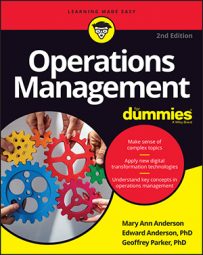Many things stand between a company’s operation management and its quality-centered end game. Among the obstacles are the tendency to lose focus on the goal of quality improvement, get sidetracked by a seeming “silver bullet” that promises to solve all the quality issues, or simply give up when the gains don’t come fast enough.
Failure to focus
Implementing quality improvement requires a great deal of time and commitment. A mistake that many organizations make is to jump headfirst into too many projects. At the start of the journey, everyone is excited about the potential that quality improvement promises, and the firm may embark on several projects at a time. This reduces the focus on any one project and often stretches resources too thin.
Start by choosing a project that involves a process that employees have a lot of knowledge about and understand well. This helps ensure that the results are successful and encourages others to get behind future projects.
When adding projects, choose carefully. Tools such as the Pareto chart can help you select the most important issues to address.
Paralysis by prioritization
Some companies fall into the trap of spending so much time on prioritizing potential projects that they never get down to the real work. When selecting projects, companies typically rank them based on anticipated benefit, which is often the expected return on investment. This often leads to disagreement across the organization as to which project should get first priority. And as you may know, benefits data is easy to manipulate.
Don’t get caught in this trap. If you must choose between two or more improvement projects that have roughly the same value, just choose one and get started. Completing any project that provides benefit to the business is much better than waiting to find the “perfect” project.
You may want to start with the project that’s easiest and quickest to implement. A quick victory at the beginning of a quality improvement initiative can provide momentum to the organization on future projects.
Avoid the lure of magical solutions
Falling victim to the “silver bullet” quality program happens to the best of ’em. Magical, fix-it-all, pain-free programs are usually touted as the program that is going to save the company, but easy, catch-all solutions often involve a consulting agency coming into the company with grand ideas and beautiful presentations that are likely to fail because they don’t follow the proven methods.
After a few months with few results, firms that embrace such programs often end up, moving on to the next program that promises quick and easy results.
This approach may ultimately sabotage your quality improvement efforts. Employees become tired and complacent about these programs, and they dismiss future programs as a waste of time; after all, none of the past programs ever panned out very well.
Lack of employee involvement
In order for quality improvement projects to be successful, all levels of an organization must commit to the effort. This means that all employees must understand the importance of the quality projects and contribute to their success.
Employees sometimes view improvement efforts as a threat to their job security or as an examination into whether they can do the job. Therefore, when identifying and implementing any process changes, be sure to consult with and educate the people involved with performing the process targeted for improvement. Often, just knowing why the change is being made is enough to earn buy-in from the employees.
Know what to do
One of the biggest obstacles to quality success is not knowing what to do if a process is discovered to be out of control, or unstable. Setting up and monitoring the control charts require significant time and resources. Employees must take samples, perform the necessary observations and measurements, and record the results on the chart. That’s the easy part.
What happens when a sample indicates that the process has changed and is now out of control? That’s the hard part. A company must establish procedures and train employees to enact them to deal with an out-of-control situation. Failure to act or acting inappropriately won’t lead to improved quality and may even make the situation worse.
Learn from the experience
Few firms make the effort to learn from past quality projects. After completing a project, companies often just move on to the next effort and lose what they learned from the last one. Projects should have a formal documentation process (often called after-action or after-project review) to record what happened, what the results were, and why.
Companies should also conduct after-project reviews to share project lessons. But don’t limit these reviews to the project team; include personnel who may be working on other projects so they can duplicate successes and learn from mistakes.
Calling it a program
A program implies something that has a defined beginning and end. Quality improvement shouldn’t be a program; it should occur naturally as part of the everyday job. Quality must become institutionalized and become an underlying foundation for the company. Without this shift in culture, true quality success is only a passing dream.
Giving up
Achieving improvement and implementing change is a slow, continuous process. It doesn’t happen overnight. Expecting instant improvements is a recipe for disaster, and giving up too quickly because your first efforts don’t produce the desired results only leads to failure. But with continual focus and a commitment, you will see improvement. Stick with it!

